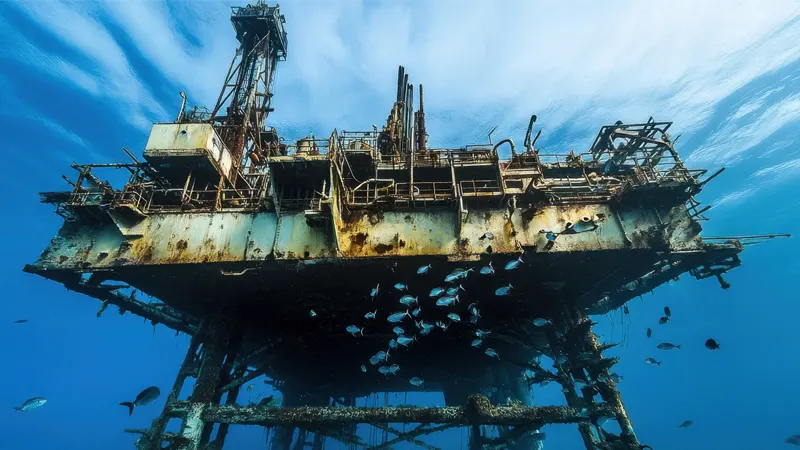
 Amidst the tightening up of decommissioning regulations, and the substantial amount of infrastructure coming to the end of its operational life, the Rigs-to-Reef programme has emerged as an attractive option in the Gulf of Mexico in the face of spiralling decommissioning costs.
Amidst the tightening up of decommissioning regulations, and the substantial amount of infrastructure coming to the end of its operational life, the Rigs-to-Reef programme has emerged as an attractive option in the Gulf of Mexico in the face of spiralling decommissioning costs.
Over the course of their lives, oil and gas structures in the marine environment become a haven for marine life. The Rigs-to-Reef programme, operated by the Bureau of Safety and Environmental Enforcement (BSEE) provides an alternative to the obligation to onshore disposal by converting retired platforms into permanently submerged ‘artificial reefs’. Such a method (achieved through tow-and-place, topple-in-place, or partial removal) allows operators to save an estimated quarter of the cost of a full service removal and is something of a trademark of the region, with around 600 platforms turned into reefs since conception in 1984. According to an article in the Scientific American, of the 15 structures decommissioned in the Gulf of Mexico in depths greater than 400 feet, 14 have been “reefed.”
According to the BSEE, the benefits of such an approach include saving fuel emissions that otherwise would be expended transporting and disposing of obsolete structures; enriching the marine life in the area, given the natural bottom of the Gulf of Mexico offers very little natural hard bottom and reef habitat; attracting recreational and commercial fishing and diving; and promoting biodiversity. A typical eight-leg structure provides a home for 12,000 to14,000 fish, according to a study by the Coastal Marine Institute, while a typical four-leg structure provides two to three acres of habitat for hundreds of marine species. For the oil and gas companies themselves, repurposing obsolete structures saves them the costs of removing, transporting, and disposing of them onshore. BSEE regulations require that, within one year of a lease's expiration, the obsolete structure must be removed.
All five Gulf of Mexico coastal states have approved artificial reef plans and have incorporated decommissioned platforms into their artificial reef programmes. Converting into reefs entails meeting strict criteria and requirements, such as the structure being sound, stable, clean, and overall beneficial to the environment, while protecting the Gulf of Mexico's natural resources. The operator is required to make a donation to the state, which goes towards the management of the state’s artificial reef programme. Once the operator has received approval, converts the structure to a permanent artificial reef and has complied with all permits and donation agreements, the title and liability for the structure is transferred from the operator to the state.
While there are examples of rig-to-reef approaches in other regions of the world and interest is growing, there are as yet no international standards governing the reefing of rigs, and the Gulf of Mexico has the most developed and regulated system. While some stress the benefits of the initiative, and the environmental damage that could be caused by complete removal of a rig with the potential destruction of a rich aquatic ecosystem, many are less convinced, and public perception is often not in favour. Many oppose any oil infrastructure being permitted to stay in the ocean given it could be seen to let oil and gas companies off the hook financially, arguing that operators should be required to return the area to its original state.

 In a bid to boost production from the Perdido platform that is operational for the Phase 3 Silvertip Development in the US Gulf of Mexico, Shell has onboarded Subsea7 for extensive engineering, procurement, construction, and installation (EPCI) work that will run 3,000 metres deep into the Alaminos Canyon.
In a bid to boost production from the Perdido platform that is operational for the Phase 3 Silvertip Development in the US Gulf of Mexico, Shell has onboarded Subsea7 for extensive engineering, procurement, construction, and installation (EPCI) work that will run 3,000 metres deep into the Alaminos Canyon.
Subsea7's services will also include the installation of a production flowline and related subsea infrastructure. The company is currently tackling the project management and engineering of this contract at their office in Houston, Texas.
"This new award strengthens our diverse portfolio of deepwater projects in the Gulf of Mexico. We look forward to continuing our collaboration with Shell," said Craig Broussard, Senior Vice President for Subsea7 Gulf of Mexico.
Owned by Shell (40%) – who is also the operator – and Chevron (60%), the wells within the Silvertip Frio reservoir can achieve a combined yield of nearly 6,000 barrels of oil equivalent per day. A final investment decision has hence been reached to advance production optimisation across two wells that comprise the Phase 3 Silvertip project. The companies are aiming first production in 2026.
"This investment at Perdido is another example of our focus on high margin, lower carbon intensity barrels," said Rich Howe, Shell's Executive Vice President for Deep Water. "As the largest operator in the US Gulf of Mexico, we prioritize opportunities nearby our existing assets in these advantaged corridors, where we are well-positioned to develop shorter-cycle, high value tieback opportunities."


Expro, an energy services provider with capabilities spanning well construction, well flow management, subsea well access, and well intervention and integrity solutions, has won a significant contract for the provision of a well decommissioning solution.
The company has agreed to provide a surface fluid management package and its market-leading 7-3/8” large-bore subsea test tree assembly (SSTTA) with surface tree and controls, providing dual barrier and disconnect capability to facilitate re-entry into the subsea wells.
The contract is reportedly valued at more than US$10mn and will see Expro plug and abandon 52 wells – many of which the company had previously been in the construction of.
“Having been involved in the development phase for many of these fields, we have gained a life of well experience that will be invaluable for this P&A campaign,” said Iain Farley, Expro’s Regional Vice President for Europe and Sub-Saharan Africa. “Our expertise and know how will help deliver key technical and commercial benefits for the client across the project.”
In receiving the contract, Expro drew attention to its unrivalled portfolio of standard and bespoke subsea solutions. The company offers subsea well access systems that interface with any Christmas tree type and can operate in open water or within a drilling riser with blow-out preventer. Expro’s surface well test systems equally provide industry-leading solutions that can be configured to specific well conditions and customer requirements.
“The contract reinforces our reputation as the leading provider of subsea safety systems and surface well test equipment, including within the P&A sector,” Farley added. “It demonstrates our commitment to delivering best-in-class equipment, allied with the highest standards of safety and service quality that Expro is renowned for.”

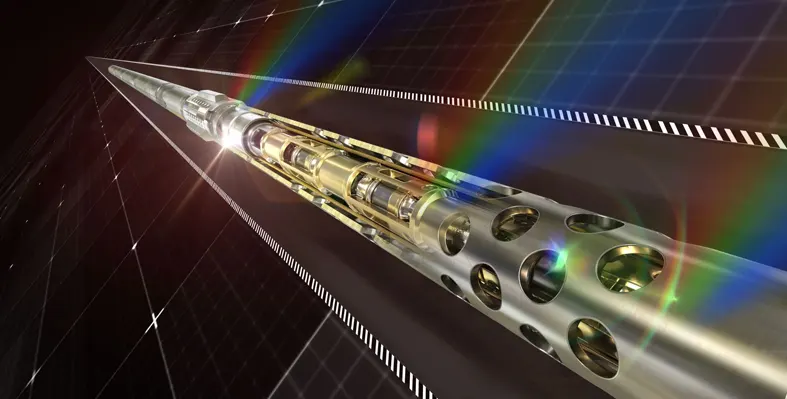 Halliburton has introduced the Intelli suite of diagnostic well intervention wireline logging services.
Halliburton has introduced the Intelli suite of diagnostic well intervention wireline logging services.
Whether integrated or used individually, this suite of services help in production optimisation by ensuring customised and improved well insights, supporting asset life expansion, and operational costs reduction.
"As customers look to maximise production and improve the efficiency of their wells, our Intelli suite helps improve downhole insights in a highly customisable way. Because each job is unique, we wanted to develop a suite of products that could be used individually, or as an integrated solution, ultimately, delivering a better experience and result for our customers," said Chris Tevis, Vice President of Wireline and Perforating.
A complete diagnostic well intervention package, the suite consists of IntelliSat, IntelliFlow, IntelliGuard and IntelliScope.
The IntelliSat pulsed-neutron logging service provides reservoir insights either in open hole or after a well is completed. This service helps improve recovery with the detection of bypassed pay, and provides spectroscopy and KUTh measurements.
The IntelliFlow array production logging service is co-located with fluid ID and flow rate sensors to ensure high accuracy of production profiles, precision phase analysis, and dynamic flow information.
The IntelliGuard corrosion evaluation service is the next generation high-definition casing inspection technology, quantifing metal loss in up to seven concentric casings, and pinpointing damage without the need for costly well intervention.
The IntelliScope leak and flow diagnostic service identifies precise leak sources and flow paths vertically and radially behind pipe in a single, continuous pass.

 In a press conference last week, the Government of Alberta has committed CAD$50mn to establish the Alberta Drilling Accelerator (ADA), Canada’s first test site dedicated to advancing drilling technologies for geothermal, lithium and carbon capture industries.
In a press conference last week, the Government of Alberta has committed CAD$50mn to establish the Alberta Drilling Accelerator (ADA), Canada’s first test site dedicated to advancing drilling technologies for geothermal, lithium and carbon capture industries.
ADA will offer an open-access site for testing innovative technologies in high-temperature subsurface conditions across an array of rock formations. Eavor Technologies, Halliburton and Tourmaline Oil Corp are among the top companies expressing an interest in becoming anchor tenants for the project.
Minister of Environment and Protected Areas, Rebecca Schulz, said, “We are increasing production, reducing emissions, all while meeting those rising demands for energy for years to come. This is thanks to our geology, expertise and highly skilled workforce of Albertans.”
Eavor CEO, John Redfern, affirmed Alberta’s drilling legacy, stating, “By establishing this technology incubator, we’re ensuring Alberta remains an international leader in geothermal innovation.”
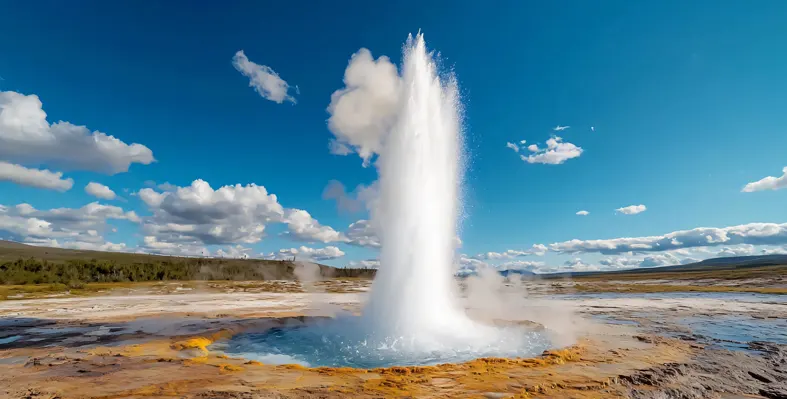
 Driven by a commitment to work in partnership with indigenous communities to advance the clean energy transition, the Government of Canada has announced it will supply over CAD$2mn in geothermal funding.
Driven by a commitment to work in partnership with indigenous communities to advance the clean energy transition, the Government of Canada has announced it will supply over CAD$2mn in geothermal funding.
Michael McLeod, Member of Parliament for Northwest Territories, announced the increased funding through the Clean Energy for Rural and Remote Communities (CERRC) programme to support ADK Holdings Ltd.’s geothermal energy development project.
Held by Acho Dene Koe First Nation’s economic development corporation, the project will engage the community of Echaot’l Koe (Fort Liard) and support Acho Dene Koe First Nation in determining the best strategies for developing the geothermal resources found in the First Nation’s traditional territory.
The initiative aims to identify specific opportunities for geothermal resource development. Supporting the potential transition of Indigenous communities to renewable energy will reduce diesel use for heating, create jobs and enable economic development in the Fort Liard region.
“In northern Canada and across the country, clean energy presents an enormous economic opportunity that will also help people save money on their energy bills while keeping the air clean. The ADK Geothermal Development project will make a real difference in the lives of people living in the Northwest Territories while also driving down climate-changing emissions. Indigenous communities deserve to have access to the resources they need to advance clean energy solutions in their home territories – and that is exactly what the Government of Canada is supporting through this project.” said Jonathan Wilkinson, Minister of Energy and Natural Resources.
Michael McLeod, Member of Parliament, Northwest Territories, said, “It’s great to see innovative projects come to life that will contribute to reducing diesel use and bringing health and economic benefits to communities. It’s another step in the Government of Canada’s commitment to supporting reconciliation, further recognising Indigenous communities’ expertise in addressing climate change and protecting the environment.”
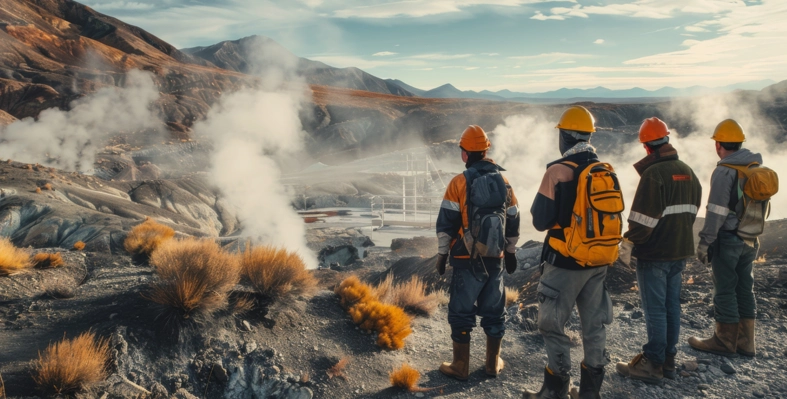
 E2E Energy Solutions has signed of a Letter of Intent with Novus Earth to jointly develop the Latitude 53 Hinton Inc project over two phases
E2E Energy Solutions has signed of a Letter of Intent with Novus Earth to jointly develop the Latitude 53 Hinton Inc project over two phases
Situated just outside of Hinton, Alberta, the groundbreaking initiative represents a major step forward in geothermal energy development. With construction set to begin in early 2025, the project will drive both sustainable energy solutions and agricultural growth.
The first phase of the project will focus on utilising geothermal energy to support year-round strawberry cultivation across a 20-acre greenhouse. This facility will receive up to 50 gigajoules of sustainable, consistent heat per hour, provided by E2E's geothermal technology. The second phase will incorporate E2E’s patented Enhanced Geothermal Reservoir Recovery System (EGRRS) to generate 10 MW of zero-emission power, proving the feasibility of geothermal technology as a reliable energy source.
"We are looking forward to introducing this innovative approach to thermal and electrical generation to Alberta," said Jeff Mesner, President of Novus Earth. "Our partnership with E2E Energy Solutions perfectly aligns with our mission to leverage advanced geothermal technology for sustainable, community-centered projects."
“We’re very pleased to see our EGRRS technology integrated into a project that will bring stable, affordable energy to Alberta,” said Nick Daprocida, CEO of E2E Energy Solutions. “This project demonstrates how geothermal energy can contribute to creating sustainable jobs and delivering reliable baseload power to the agricultural sector.”
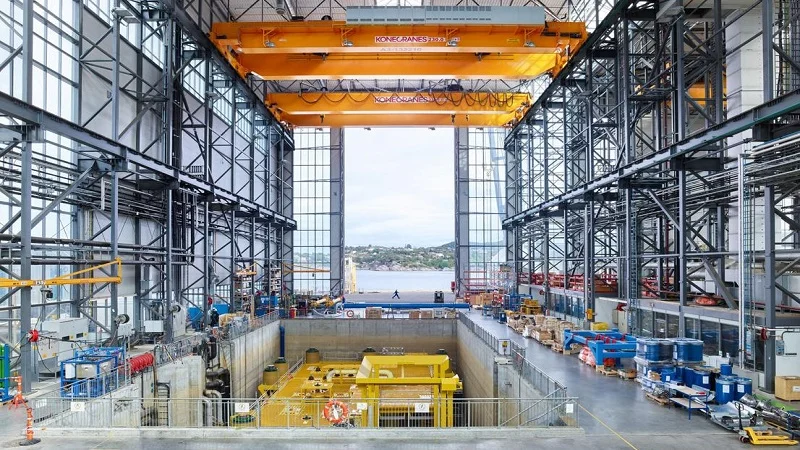

SLB, a global technology company, has announced that its SLB OneSubsea joint venture has been awarded a contract by bp to implement a boosting system in the greenfield development of the Kaskida project in the Gulf of Mexico.
“We’re delighted to expand our relationship with bp into the subsea processing domain, especially with such a critical delivery to bp’s first Paleogene field development” remarked Mads Hjelmeland, CEO of SLB OneSubsea. “Our subsea boosting system will accelerate and maximise the immense potential for this development.”
The contract represents the first engineering, procurement and construction contract for a subsea boosting system between bp and SLB OneSubsea. It includes a supplier-led, high-pressure subsea pump solution complete with an integrated power and controls umbilical, in addition to topside equipment.
The boosting system has been regarded as a key technology within bp’s first Paleogene field development. It will supply the required artificial lift needed to maximise production through the accelerated recovery of reserves with minimal energy consumption. The new award has also been celebrated as a continuation of the long-standing relationship between bp and SLB OneSubsea.

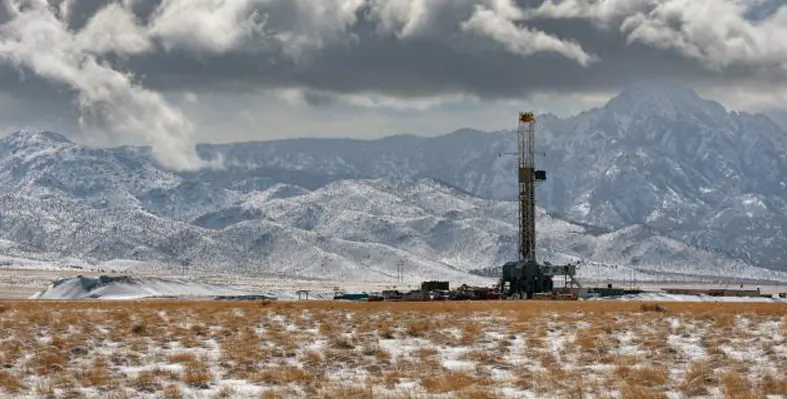 The Department of the Interior has announced the Bureau of Land Management's approval of the Fervo Cape Geothermal Power Project in Beaver County, Utah.
The Department of the Interior has announced the Bureau of Land Management's approval of the Fervo Cape Geothermal Power Project in Beaver County, Utah.
The project will use innovative technology to generate up to 2GW of baseload power that, if fully developed, is enough to supply more than two million homes. This approval marks the BLM's green-light for nearly 32GW of clean energy projects on public lands, including 42 projects approved under the Biden-Harris administration. The BLM is also proposing a new categorical exclusion to facilitate geothermal energy resources confirmation on public lands.
“Geothermal energy is one of our greatest untapped clean energy resources on public lands,” said Principal Deputy Assistant Secretary for Land and Minerals Management, Steve Feldgus. “Today’s actions are part of the Department’s work to deliver on new opportunities, new technologies, and new solutions in geothermal energy that support the Biden-Harris administration’s commitment to create jobs, economic growth, and clean carbon-free electricity for communities throughout the West.”
“The BLM is committed to supporting the responsible growth of geothermal energy on public lands,” said BLM Director Tracy Stone-Manning. “We need all the tools in the toolbox to reach a clean energy future, and this proposed categorical exclusion will be helpful in accelerating the process of locating new geothermal resources.”
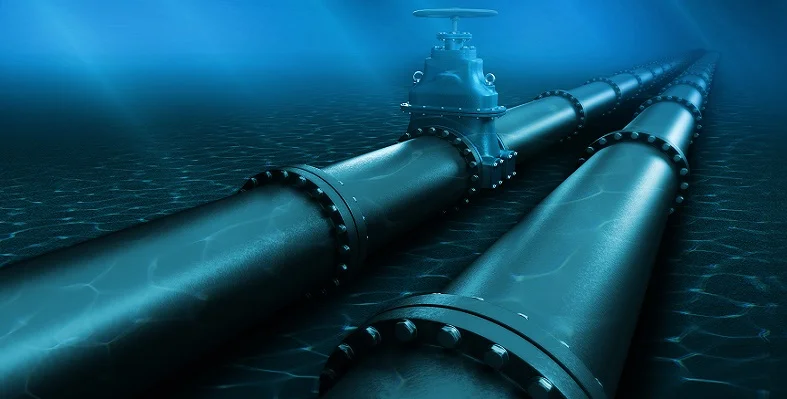

The Bureau of Safety and Environmental Enforcement (BSEE) has awarded a contract and first task order for the decommissioning of eight orphaned pipelines in the Matagorda Island lease area.
This move comes as part of the Biden-Harris Administration’s concerted efforts to address legacy population and will see work take place in the area which is located around 12 miles off of the Texas coast.
On 4 September, BSEE awarded a five-year indefinite delivery/indefinite quantity contract to Chet Morrison Contractors, LLC, to conduct on-site pipeline decommissioning activities. This was closely followed, on 12 September, by the award of the first task order under the contract, for the Matagorda Island Areas.
“With this award, BSEE advances to the active pipeline decommissioning phase of the Matagorda Island area project,” remarked Kathryn Kovacs, Interior Deputy Assistant Secretary for Land and Minerals Management, who leads BSEE. “The funding provided by the Bipartisan Infrastructure Law is crucial to BSEE as we tackle orphaned infrastructure on the Outer Continental Shelf, which presents a serious hazard to safety and the environment.”
The project will reduce pollution risks and improve offshore safety by decommissioning infrastructure that could interfere with navigation, commercial fisheries, and other current or future ocean uses.
These awards the year are the latest in a series that has seen action take place in the Matagorda Island lease area. Last year, BSEE awarded contracts for the decommissioning of nine orphaned wells there in a bid to address the urgent decommissioning needs. This included securing wellheads, decommissioning pipelines with hazardous materials, and preparing the site for permanently sealing the wells.
This has been part of the Bipartisan Infrastructure Law which allocated US$250mn to clean up well sites in national parks, national forests, national wildlife refuges, and other public lands and waters. Nearly US$150mn has been disbursed over the past three years.
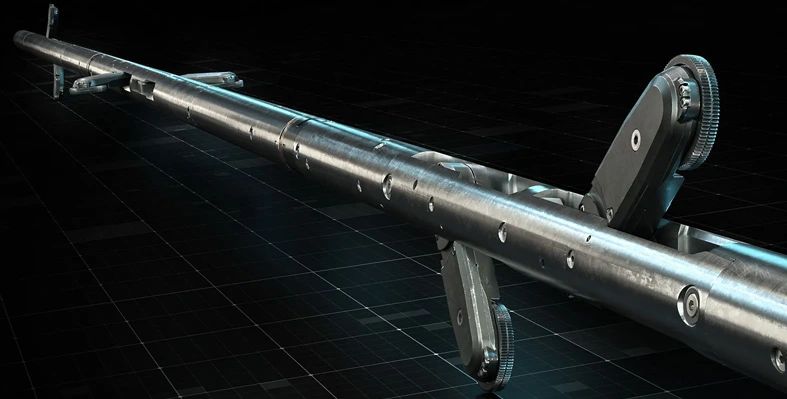
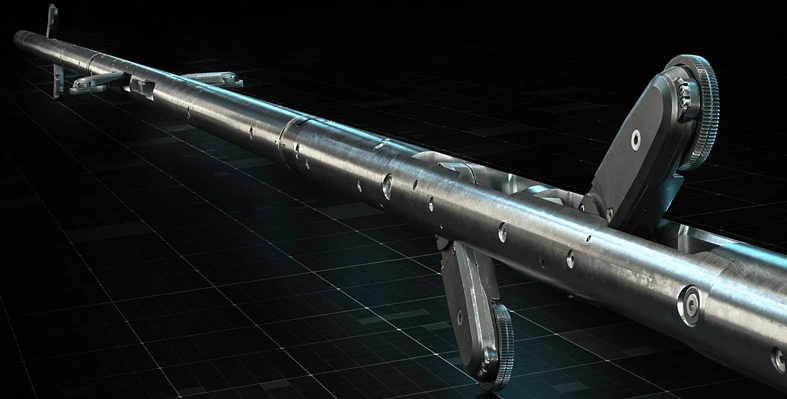
Halliburton has launched the Clear portfolio of electromechanical well intervention technologies and services
This portfolio addresses challenges related to high-angle deployment and includes surface readout telemetry for communication and precise control to deliver differentiated performance. It includes the ClearTrac wireline tractor and ClearCut non-dangerous goods electromechanical pipe cutters. ClearShift high-expansion shifters will also soon be introduced to open and close downhole valves that include barrier isolation devices.
The ClearTrac wireline tractor is an advanced wireline conveyance technology for highly deviated or horizontal wells that require cased-hole logging diagnostics, perforating, and powered mechanical intervention services. It uses an innovative electromechanical drive and real-time telemetry for communication and precise control to deliver unmatched performance compared to pipe-conveyed solutions. ClearTrac wireline tractor achieves speeds from 5 to 125 ft per minute and carries payloads up to 1,000 lbs. with a single-drive section. It provides an economical conveyance solution that acquires data in up-and-down passes. This increases efficiency and reduces the potential for HSE incidents.
The ClearCut service portfolio offers a family of pipe severing tools for a machine shop quality cut without dangerous goods from 2⅜ to 9⅝ in. ClearCut can be deployed on eline or RELAY Digital Slickline and navigate through small restrictions. It cuts outer tubing encapsulated cables in intelligent completions.
With the elimination of explosives and chemicals, ClearCut service provides a safer alternative for complex wireline interventions.
“Our Clear suite of services delivers integrated formation evaluation and intervention solutions to improve production,” said Chris Tevis, Vice President of Wireline and Perforating. “Today's launch of our power mechanical services will enable our customers to intervene in their completions in a more reliable, precise and powerful way.”

 SLB has launched a well integrity assessment solution for carbon storage developers to quantify the risks associated with wells at prospective storage sites with previous drilling activity.
SLB has launched a well integrity assessment solution for carbon storage developers to quantify the risks associated with wells at prospective storage sites with previous drilling activity.
Since carbon capture, utilisation and storage (CCUS) provides one of the most immediate opportunities for reducing emissions, establishing secure storage sites is essential to enable the growth of a low carbon energy ecosystem. SLB’s new methodology for quantifying the probability and potential impact of carbon leakage helps customers understand the risks associated with each well, informing remediation strategies and ultimately estimating the project's long-term viability.
“The significance of the risks associated with each well and the costs of remediation to mitigate leakage risks can make a project economically unfeasible,” said Frederik Majkut, Senior Vice President of Industrial Decarbonisation, SLB. “By addressing potential well integrity issues early in the development process, SLB’s well integrity assessment solution can help storage developers avoid costly delays or operational disruptions, and drive companies toward their net zero ambitions.”
There are several prospective carbon storage sites that can be found in either mature or retired oil and gas fields. Having a large number of wells at a site can increase the risk of potential leakage pathways for the stored carbon.
The new tool by SLB incorporates advanced failure mode effect and criticality analysis (FMECA) to assess potential leakage pathways, well barrier, failure mechanisms and resulting consequences. Using advanced multi-physics 3D modeling, SLB can assess the volume and flow rates of brine and carbon leakage over time to better estimate risk.
Page 6 of 18
Copyright © 2025 Offshore Network